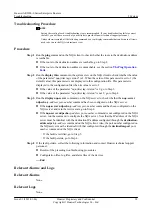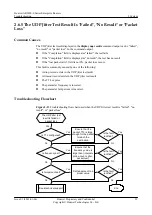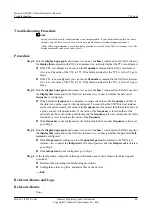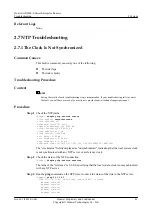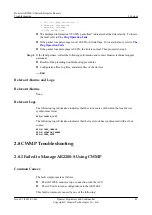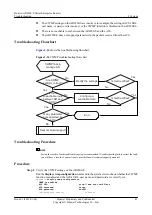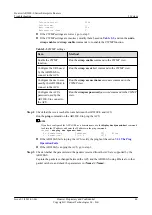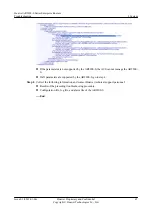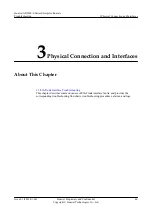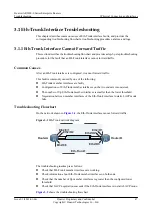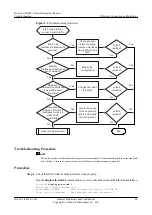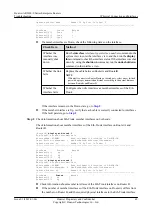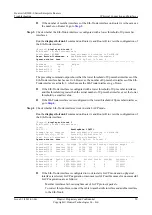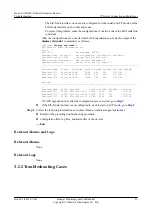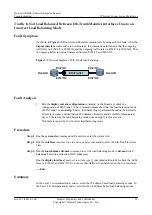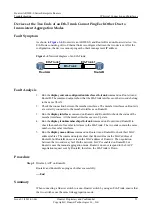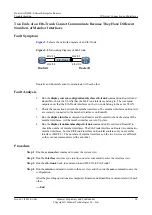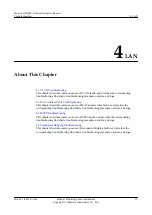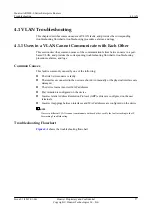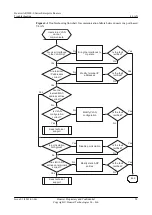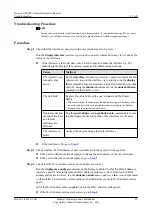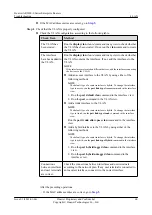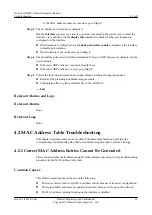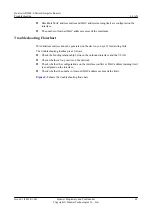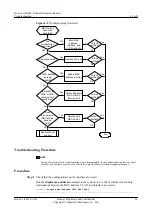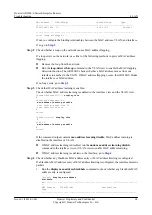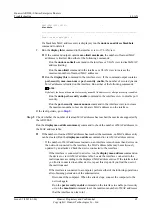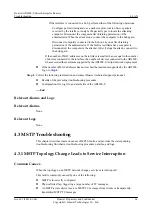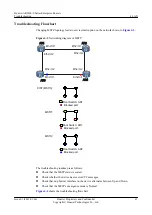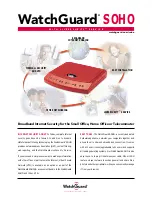
Traffic Is Not Load Balanced Between Eth-Trunk Member Interfaces Due to an
Incorrect Load Balancing Mode
Fault Symptom
, RouterA and RouterB communicate by using an Eth-Trunk. After the
display interface
command is run on RouterA, the command output shows that the outgoing
traffic rate on Eth2/0/1 is 80 Mbit/s and the outgoing traffic rate on Eth2/0/2 is 20 Mbit/s. That
is, outgoing traffic is not load balanced between Eth2/0/1 and Eth2/0/2.
Figure 3-3
Network diagram of Eth-Trunk load balancing
RouterB
Eth2/0/1
Eth2/0/2
Eth2/0/2
Eth2/0/1
Eth-Trunk1
RouterA
Fault Analysis
1.
Run the
display current-configuration
command on the Routers to check the
configuration of Eth-Trunk 1. The command outputs show that the load balancing mode
of Eth-Trunk 1 is
src-dst-ip
. That is, load balancing is performed based on the Exclusive-
Or result of source and destination IP addresses. RouterA and RouterB communicate at
Layer 2; therefore, the load balancing mode does not apply to this scenario.
This fault is caused by the incorrect load balancing mode.
Procedure
Step 1
Run the
system-view
command on RouterA to enter the system view.
Step 2
Run the
interface
interface-type
interface-number
command to enter the Eth-Trunk interface
view.
Step 3
Run the
load-balance
dst-mac
command to set the load balancing mode to
dst-mac
(load
balancing based on destination MAC addresses).
Run the
display interface
[
number
[
interface-type
] ] command on RouterA to check the traffic
rates on Eth2/0/1 and Eth2/0/2. You can see that traffic is load balanced on the two interfaces.
----End
Summary
In the Layer 3 communication scenario, select the IP address-based load balancing modes. In
the Layer 2 communication scenario, select the MAC address-based load balancing modes.
Huawei AR2200-S Series Enterprise Routers
Troubleshooting
3 Physical Connection and Interfaces
Issue 01 (2012-01-06)
Huawei Proprietary and Confidential
Copyright © Huawei Technologies Co., Ltd.
52

